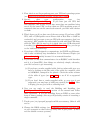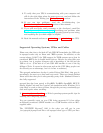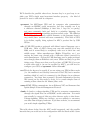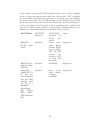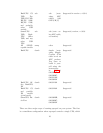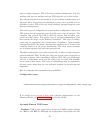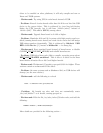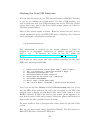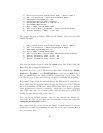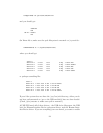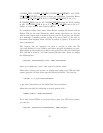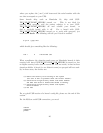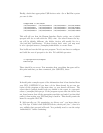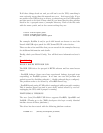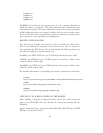
Checking Out Your USB Subsystem
You can skip this section if your UPS has an Ethernet or RS232-C interface
or you are not running on a Linux kernel. If it has a USB interface, you
need to make sure that your USB subsystem can see the UPS. On a Linux
system this is easy, just do this from a shell prompt (please see below for
2.6 kernel considerations):
Most of this section applies to Linux. However, toward the end, there is
critical information about the BSD USB driver, including a list of known
issues and kernel configuration requirements.
cat /proc/bus/usb/devices
This information is updated by the kernel whenever a device is
plugged in or unplugged, irrespective of whether apcupsd is run-
ning or not. To interpret the codes in this file, please see
http://www.linuxhq.com/kernel/v2.4/doc/usb/proc usb info.txt.html
You should get some output back that includes something like this from
ESR’s site, featuring an RS 1000:
T: Bus=02 Lev=01 Prnt=01 Port=00 Cnt=01 Dev#= 3 Spd=1.5 MxCh= 0
D: Ver= 1.10 Cls=00(>ifc ) Sub=00 Prot=00 MxPS= 8 #Cfgs= 1
P: Vendor=051d ProdID=0002 Rev= 1.06
S: Manufacturer=American Power Conversion
S: Product=Back-UPS RS 1000 FW:7.g3 .D USB FW:g3
S: SerialNumber=JB0308036505
C:* #Ifs= 1 Cfg#= 1 Atr=a0 MxPwr= 24mA
I: If#= 0 Alt= 0 #EPs= 1 Cls=03(HID ) Sub=00 Prot=00 Driver=hid
Note, if on the last line, Driver is listed as Driver=none then you do not
have the HID driver loaded or the driver did not attach to the UPS. One
common cause is having a Linux kernel older than 2.4.22 (such as a stock
RedHat 9 kernel). If this is the case for your system, please upgrade to at
least kernel version 2.4.22 and try again. Otherwise, please read further for
instructions for other possible courses of action.
For more details on how to interpret these codes, please see the end of this
section.
Here are two more ample entries from Kern Sibbald. The first features a
Back-UPS 350 direct connected USB device:
22




